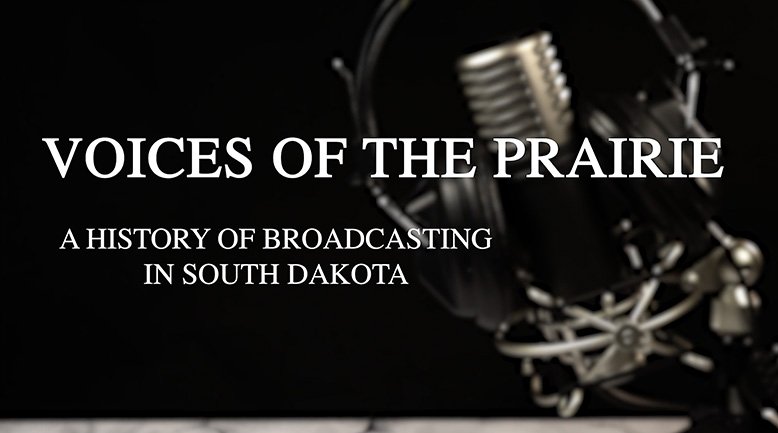
Films produced by South Dakota State University associate professor Rocky Dailey, including two documentaries featuring notable figures in South Dakota broadcasting history, will air on South Dakota Public Broadcasting in June.
“The Dean of South Dakota Broadcasting,” the second episode of Dailey’s series “Voices of the Prairie: A History of Broadcasting in South Dakota,” features radio broadcaster Dean Sorenson and will air at 8 p.m. Thursday, June 15, and 1 p.m. Sunday, June 18.
The series’ first episode, “Voices in the Air: Verl Thomson,” featuring another pioneering South Dakota radioman, will air at 8 p.m. Thursday, June 22, and 1 p.m. Sunday, June 25.
Those broadcasts will be followed by “Viriditas: Twenty-first Century Hildegard,” which airs at 1:30 p.m. Sunday, June 25.
The films are each approximately 20 minutes long, and Dailey, of SDSU’s School of Communication and Journalism, served as videographer, producer and editor for all three. The films have been previously screened at various venues and events.
Voices of the Prairie
Sorenson owned Sorenson Broadcasting, which operated multiple radio stations in the region. Originally from Mitchell, he started working at KORN when he finished high school. After broadcast school and working at stations across the state, he eventually owned radio stations in towns including Grand Rapids, Minnesota; Jamestown, North Dakota; Pierre, Yankton, Brookings, Watertown and Mitchell, with a focus on building communities.
In the 1980s, Sorenson’s Watertown station started the “Give a Buck” program that raised money to send all South Dakota legislators to Washington, D.C., to represent farmers at a time when the federal government was revising its farm policy.
“He was very influential with a lot of current broadcasters, and is to this day,” Dailey said.
A Sioux Falls-area broadcaster, Thomson grew up as radio was in its infancy and took an interest at age 6, when he heard of the sinking of the Titanic and how ship-to-shore communication helped save lives. Later, he was put in charge of Washington High School’s amateur radio station. Thomson was experimenting with radio equipment in the school physics lab when he unintentionally blew up all the Bunsen burners. But that mishap didn’t stop his tinkering and repairs.
Thomson even experienced social backlash from his hobby. Radio was an emerging technology that most people didn’t understand, and they wondered why Thomson was “hearing voices in the air” with his experiments. The self-taught expert in the field turned his hobby into a successful career, going on to work at KSOO, starting KISD in Sioux Falls and eventually leading the South Dakota Broadcasters Association.
Viriditas
“Viriditas: Twenty-first Century Hildegard” features an SDSU collaborative performance of poetry, dance, music and visual elements inspired by St. Hildegard, a German Benedictine abbess who was a poet, composer, artist, visionary and a medical writer and healer during the 12th century. The SDSU performance explores the feminine aspect of God as creator, denoting spiritual growth.
Dailey filmed the 2021 performance and added additional visual elements to it. Partners in the project were SDSU’s School of Performing Arts, including associate professor Melissa Hauschild-Mork, professor Aaron Ragsdale and professor Emily Toronto; the School of Communication and Journalism; the School of English and Interdisciplinary Studies; and the School of Design.
Preserving stories
For the past two-plus years, Dailey has been working on the broadcasting documentaries with a grant awarded through SDSU along with a contribution from the South Dakota Broadcasters Association. He hopes it continues as a long-term project as part of his ongoing research, scholarship and creative activity.
“(The series) focuses on different individuals who have been important to the development of broadcasting, starting with radio,” said Dailey, who’s working on the third episode in the documentary series now. “There’s no shortage of people to talk about, so I don’t have a cap. The next couple of episodes are still going to deal with radio. I haven’t gotten to TV, yet.”
Dailey said he started by reaching out to people he was afraid wouldn’t be around much longer, so he could preserve their stories. The series came about as he was passing the South Dakota Newspaper Hall of Fame in SDSU’s Yeager Hall. He wondered about the South Dakota Broadcasters Hall of Fame, which had long ago moved off campus and needed updates.
“I thought, as broadcasters, it makes sense that you would use video and audio mediums to tell that story. So that’s where I got the idea, and it snowballed from there,” Dailey said.
His plan lined up with the South Dakota Broadcasters Association, which had been thinking of a project like this. Dailey also wanted to highlight SDSU’s work in multimedia journalism. “All those things came together in the perfect storm, and I said, ‘I think it’s time for this project to happen.’”
Anyone with information, content or old recordings of former South Dakota broadcasters are encouraged to reach out to Dailey via email.
- Contact:
- Telephone number: 605-688-5544
Republishing
You may republish SDSU News Center articles for free, online or in print. Questions? Contact us at sdsu.news@sdstate.edu or 605-688-6161.

